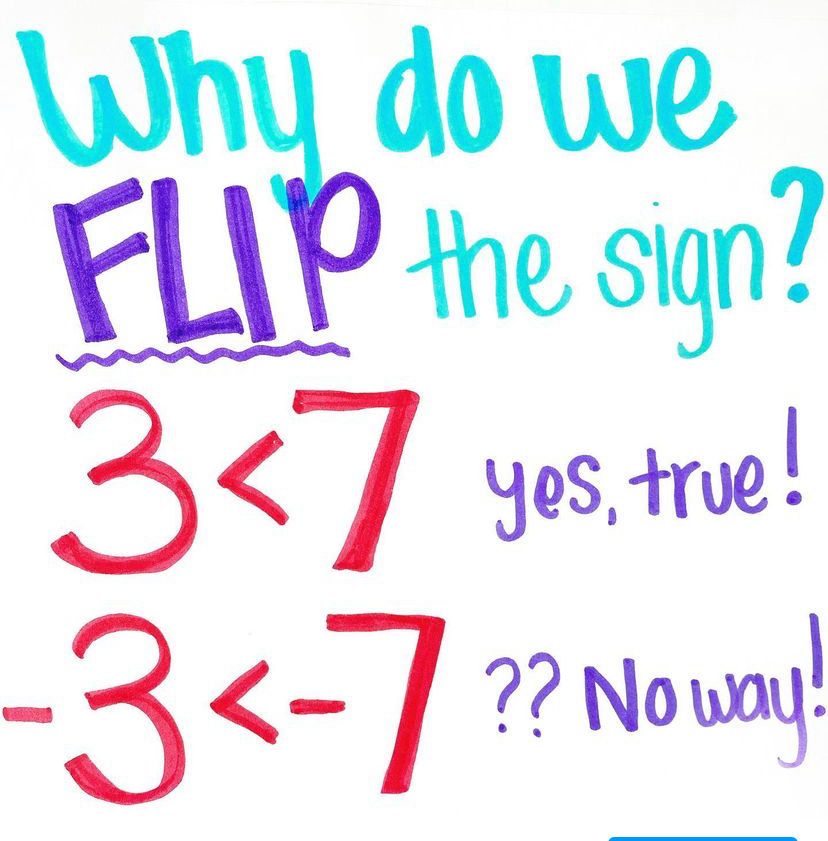WHY flip the sign?? (inequalities)
- Janae Castro

- Oct 5, 2021
- 2 min read
Updated: Apr 13, 2022
In my first years of teaching, I focused more on students knowing “when” rather than “why.” Obviously, the students need to know when to apply a rule... how is knowing the “why” going to help the students get to the solution? However, as it turns out, aiming for the “when” did not get them as far as I intended.
Take flipping the sign for example. It’s easy to teach students a rule about when to flip an inequality sign. After learning when to use the rule, they can start applying it on assignments, quizzes, and tests, right??
Unfortunately, the information gets stacked on top of the 312 other rules that we try to cram in their brain, causing their memory to do a balancing act that sometimes comes toppling down on top of them. The information gets distorted, the rules forgotten, and it can lead to academic burnout. What a mess. Can anyone relate?
ThenI started focusing on the “why.” Why do we flip the sign? By helping them grasp the mathematical rationale of why we flip the sign, it gives a web of support to keep that knowledge where it needs to be, without relying as much on the memory’s juggling act for the information. Even if they do forget “when” to use the rule, their understanding of the mechanics behind the problem will guide them to take the appropriate steps.
So, why DO we flip the inequality sign?

3 is definitely less than 7, but is -3 less than -7? Nope, it’s greater. That’s why it is necessary to flip the sign. When students are taught to consider the “why,” we help them become critical thinkers who consider the reasons behind the answers they come up with; it no longer just becomes another rule to memorize but a mathematical tool that their brain knows how to use.
What about you? What do you do to show your students the “why” behind flipping the sign?




Comments